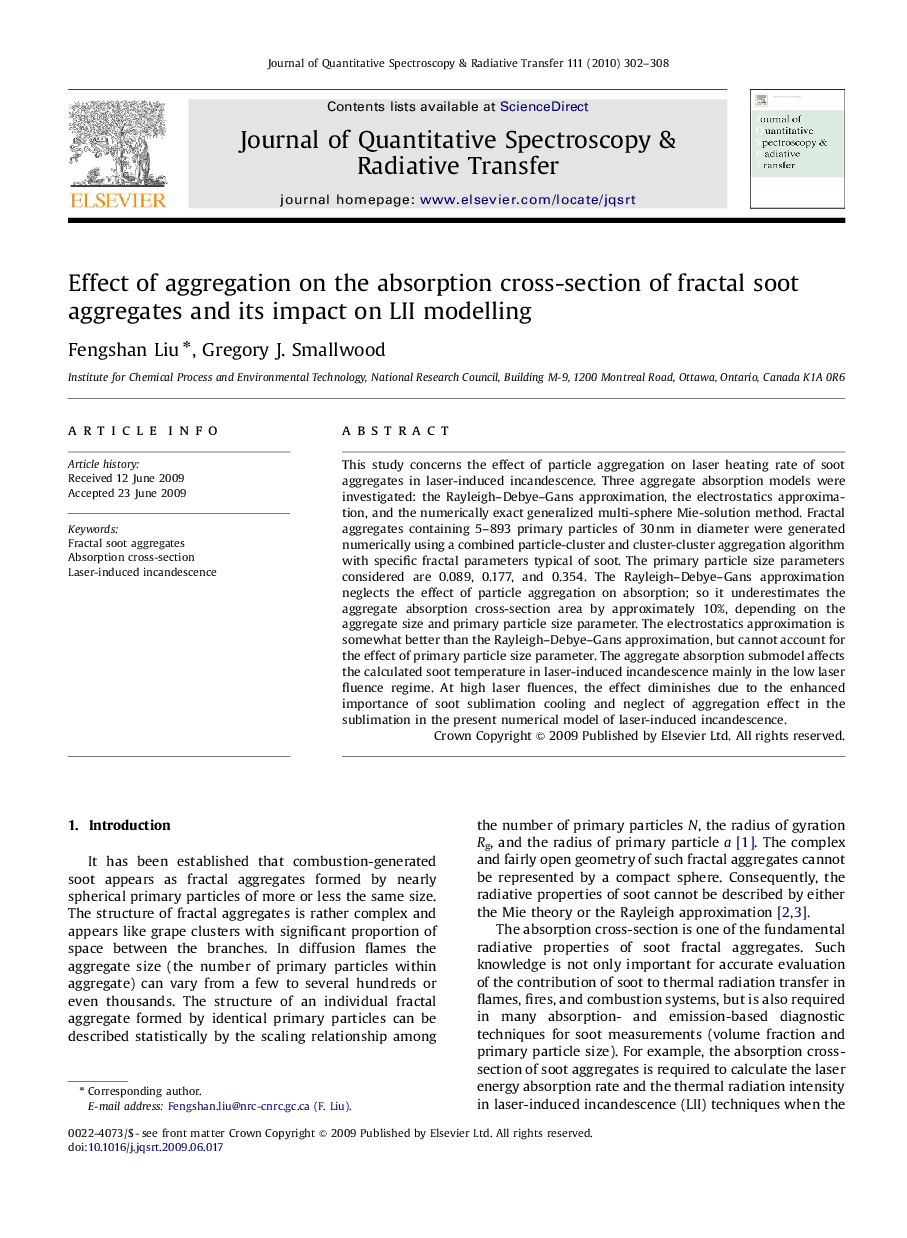| Article ID | Journal | Published Year | Pages | File Type |
|---|---|---|---|---|
| 5429886 | Journal of Quantitative Spectroscopy and Radiative Transfer | 2010 | 7 Pages |
This study concerns the effect of particle aggregation on laser heating rate of soot aggregates in laser-induced incandescence. Three aggregate absorption models were investigated: the Rayleigh-Debye-Gans approximation, the electrostatics approximation, and the numerically exact generalized multi-sphere Mie-solution method. Fractal aggregates containing 5-893 primary particles of 30Â nm in diameter were generated numerically using a combined particle-cluster and cluster-cluster aggregation algorithm with specific fractal parameters typical of soot. The primary particle size parameters considered are 0.089, 0.177, and 0.354. The Rayleigh-Debye-Gans approximation neglects the effect of particle aggregation on absorption; so it underestimates the aggregate absorption cross-section area by approximately 10%, depending on the aggregate size and primary particle size parameter. The electrostatics approximation is somewhat better than the Rayleigh-Debye-Gans approximation, but cannot account for the effect of primary particle size parameter. The aggregate absorption submodel affects the calculated soot temperature in laser-induced incandescence mainly in the low laser fluence regime. At high laser fluences, the effect diminishes due to the enhanced importance of soot sublimation cooling and neglect of aggregation effect in the sublimation in the present numerical model of laser-induced incandescence.
